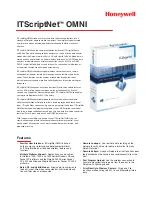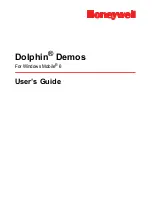
90
Chapter 4: Using Expressions and Pound Signs
Note:
You do not need to use pound signs when you use the
cfset
tag to assign one variable’s value
to another value. For example, the following tag assigns the value of the oldVar variable to the new
variable, newVar: <cfset newVar = oldVar>.
Using pound signs in tag bodies
You can put variables or functions freely inside the bodies of the following tags by enclosing each
variable or expression with pound signs:
•
cfoutput
•
cfquery
•
cfmail
For example:
<cfoutput>
Value is #Form.MyTextField#
</cfoutput>
<cfoutput>
The name is #FirstName# #LastName#.
</cfoutput>
<cfoutput>
The value of Cos(0) is #Cos(0)#
</cfoutput>
If you omit the pound signs, the text, rather than the value, appears in the output generated by
the
cfoutput
statement.
Two expressions inside pound signs can be adjacent to one another, as in the following example:
<cfoutput>
"Mo" and "nk" is #Left("Moon", 2)##Mid("Monkey", 3, 2)#
</cfoutput>
This code displays the following text:
"Mo" and "nk" is Monk
ColdFusion does not interpret the double pound sign as an escaped # character.
Using pound signs in strings
You can put variables or functions freely inside strings by enclosing each variable or expression
with pound signs; for example:
<cfset TheString = "Value is #Form.MyTextField#">
<cfset TheString = "The name is #FirstName# #LastName#.">
<cfset TheString = "Cos(0) is #Cos(0)#">
ColdFusion automatically replaces the text with the value of the variable or the value returned by
the function. For example, the following pairs of
cfset
statements produce the same result:
<cfset TheString = "Hello, #FirstName#!">
<cfset TheString = "Hello, " & FirstName & "!">
If pound signs are omitted inside the string, the text, rather than the value, appears in the string.
For example, the following pairs of
cfset
statements produce the same result:
<cfset TheString = "Hello, FirstName!">
<cfset TheString = "Hello, " & "First" & "Name!">
Summary of Contents for COLDFUSION MX 61-DEVELOPING COLDFUSION MX
Page 1: ...Developing ColdFusion MX Applications...
Page 22: ...22 Contents...
Page 38: ......
Page 52: ...52 Chapter 2 Elements of CFML...
Page 162: ......
Page 218: ...218 Chapter 10 Writing and Calling User Defined Functions...
Page 250: ...250 Chapter 11 Building and Using ColdFusion Components...
Page 264: ...264 Chapter 12 Building Custom CFXAPI Tags...
Page 266: ......
Page 314: ...314 Chapter 14 Handling Errors...
Page 344: ...344 Chapter 15 Using Persistent Data and Locking...
Page 349: ...About user security 349...
Page 357: ...Security scenarios 357...
Page 370: ...370 Chapter 16 Securing Applications...
Page 388: ...388 Chapter 17 Developing Globalized Applications...
Page 408: ...408 Chapter 18 Debugging and Troubleshooting Applications...
Page 410: ......
Page 426: ...426 Chapter 19 Introduction to Databases and SQL...
Page 476: ...476 Chapter 22 Using Query of Queries...
Page 534: ...534 Chapter 24 Building a Search Interface...
Page 556: ...556 Chapter 25 Using Verity Search Expressions...
Page 558: ......
Page 582: ...582 Chapter 26 Retrieving and Formatting Data...
Page 668: ......
Page 734: ...734 Chapter 32 Using Web Services...
Page 760: ...760 Chapter 33 Integrating J2EE and Java Elements in CFML Applications...
Page 786: ...786 Chapter 34 Integrating COM and CORBA Objects in CFML Applications...
Page 788: ......
















































